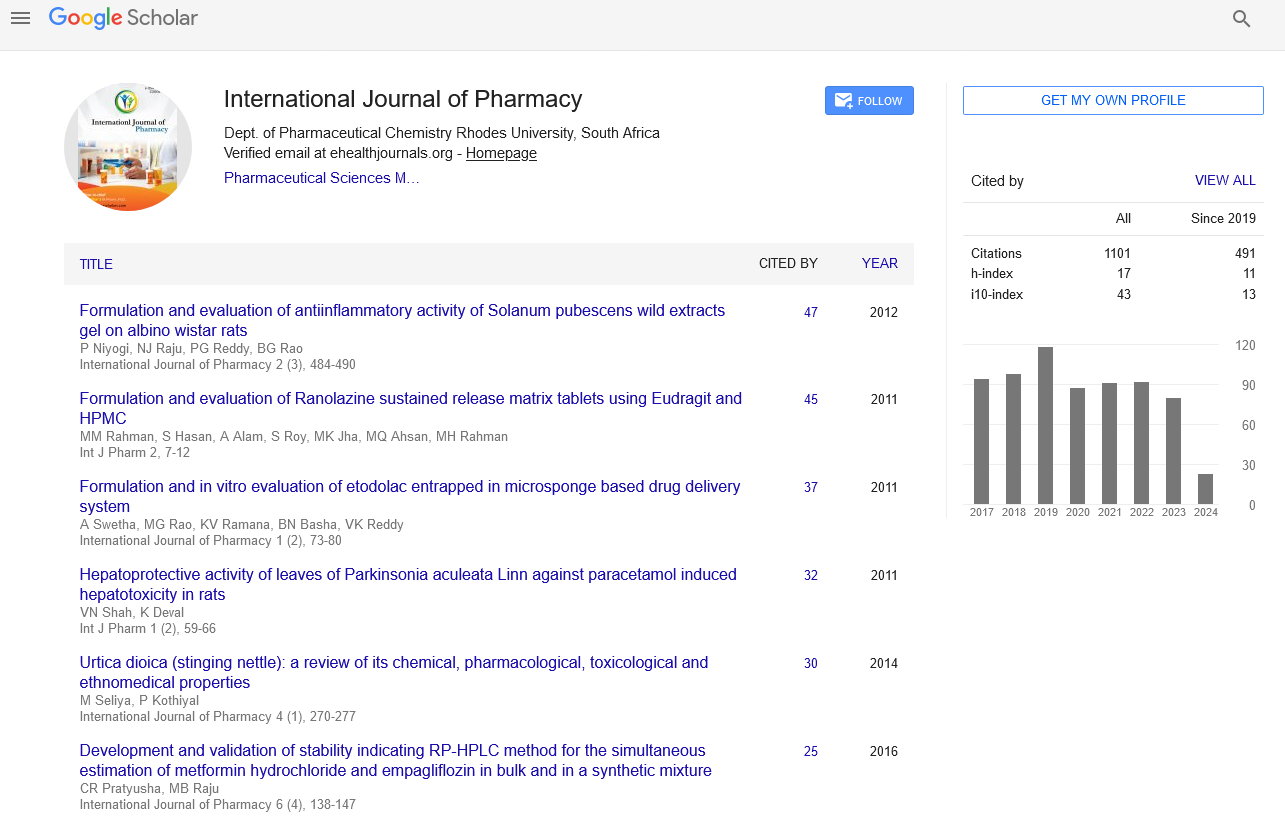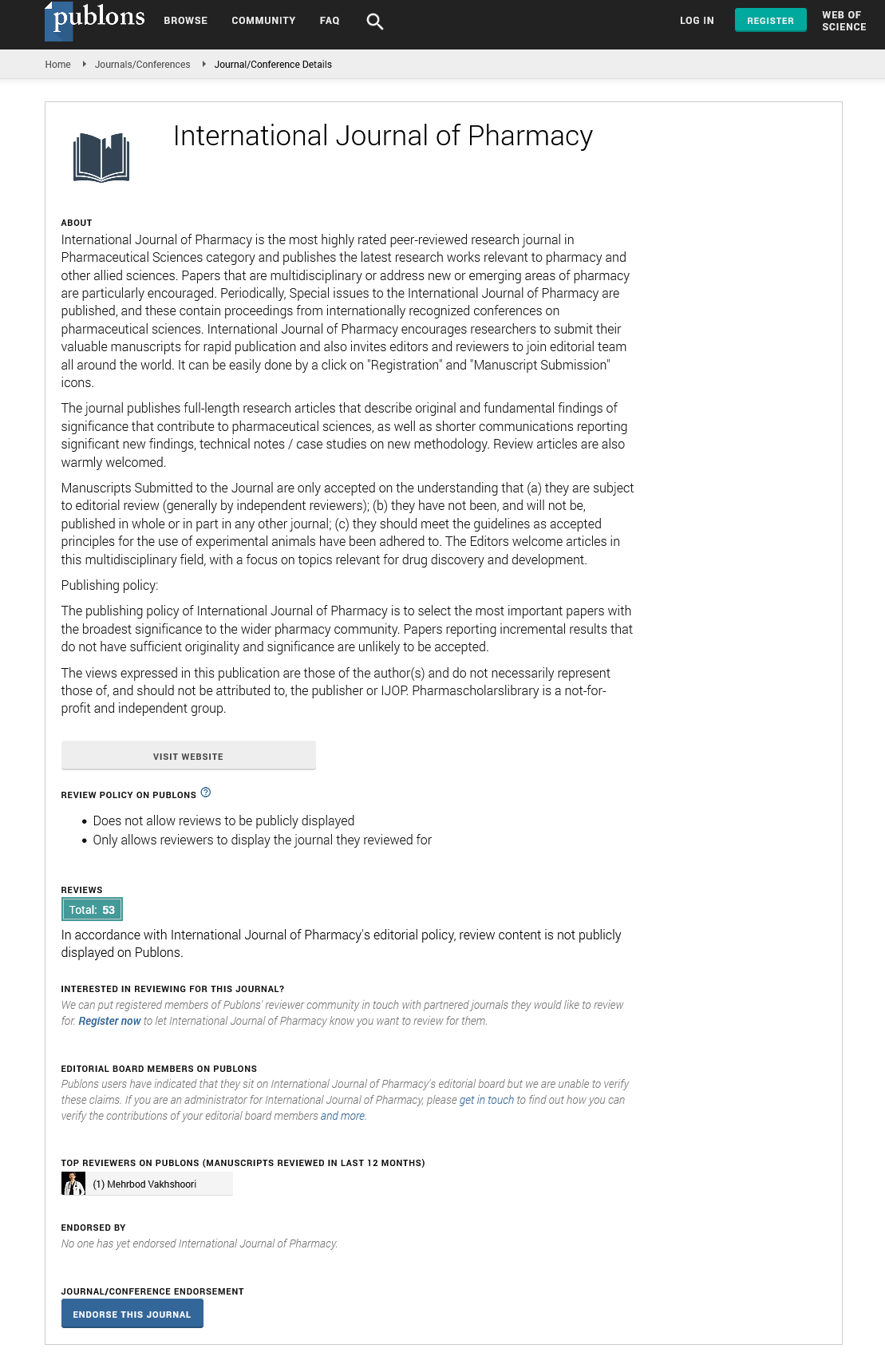Abstract
The Implications of Fixed Dose Combination (FDC) Compared to Single Pill Combinations (SPC): Based on Patients�?? View
Mubarak N Al Ameri1,2, Shaikha Alswaidi3, Emad Makramalla3*, Ola Al Ahdab4, Saeed H Abdulla3,5, Ahmad M Dawaghreh6
Fixed dose Combination (FDC) was mainly presented to simplify complex medical regimens and potentially improve adherence. Therefore, it was advocated in several chronic diseases guidelines in hospitals and health authorities. However, the data on comparison of FDC with their Single Pill Combination (SPC) to improve patient’s medication compliance is limited. Objective: To highlight the implications of FDC medicines compared to SPCs in a tertiary hospital in the United Arab Emirates (UAE). Method: This is a single-center observational retrospective cohort study conducted in a tertiary hospital in the UAE. This study was performed from patient perspective by using a survey on a target of 200 chronic patients using multiple-choice simple questions. The questionnaire was in Arabic—the mother tongue language of the UAE. The inclusion criteria were adult patients over 18 years, able to read and write Arabic, and willing to fill in the questionnaire, has at least one chronic condition and using at least one combination medicine for a minimum of 3 months. Economic impact was also measured based on the pricing lists of the combinations versus single doses, presuming the same clinical effect. Results: Only 67 patients were included in this study, of them 58% males and 42% females. Age groups between 20 and 49 years old showed the highest acceptance of FDC with a percentage of 78%. On the other hand, 70-81 years old were the lowest age group to accept the FDC with a percentage of 27%. Additionally, it was found that 55% of the men aged from 20 to 49 years old had more prevalence of accepting FDC than women from the same age group with 25.9%. Nevertheless, 63% of the included patients were taking five or more medications and were exposed to at least one poly-pharmacy episode and the risk of non-compliance to the medication regimen is reduced. Conclusions: This study is additional evidence that the use of FDCs is encouraging. FDC provides us with a strong armamentarium in chronic disease management. Although there are some advantages and disadvantages of using FDC, it should be considered in patients with chronic conditions for improving medication compliance which
can translate into better clinical outcomes.
Manuscript Submission
Submit your manuscript at Online Submission System
Google scholar citation report
Citations : 1101
International Journal of Pharmacy received 1101 citations as per google scholar report
International Journal of Pharmacy peer review process verified at publons
Indexed In
- CAS Source Index (CASSI)
- HINARI
- Index Copernicus
- Google Scholar
- The Global Impact Factor (GIF)
- Polish Scholarly Bibliography (PBN)
- Cosmos IF
- Open Academic Journals Index (OAJI)
- Directory of Research Journal Indexing (DRJI)
- EBSCO A-Z
- OCLC- WorldCat
- MIAR
- International committee of medical journals editors (ICMJE)
- Scientific Indexing Services (SIS)
- Scientific Journal Impact Factor (SJIF)
- Euro Pub
- Eurasian Scientific Journal Index
- Root indexing
- International Institute of Organized Research
- InfoBase Index
- International Innovative Journal Impact Factor
- J-Gate

